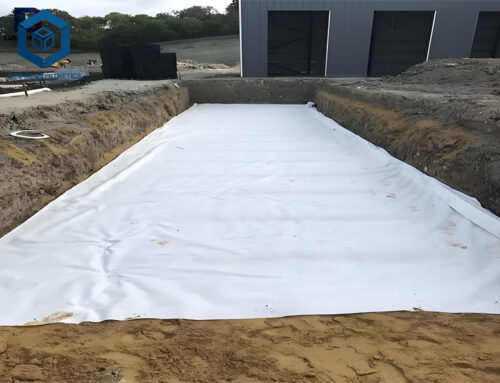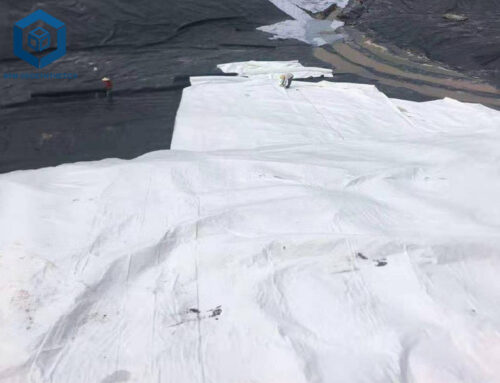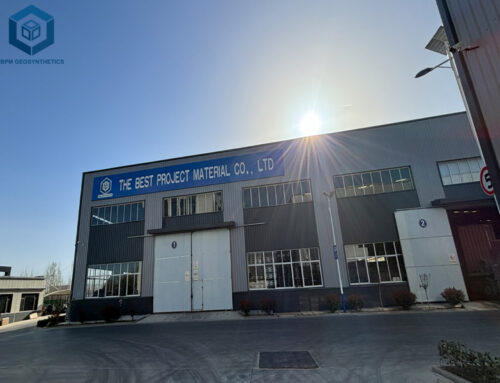Geo Fabric is an important material required for modern road construction projects and plays multiple roles in road construction. BPM Geo Fabric For Roads are made of durable polymer materials and is a complete civil engineering solution with functions ranging from separation and reinforcement to filtration, drainage, and protection. As a leading Geo Fabric manufacturer, BPM always adheres to the attitude of satisfying and reassuring customers, and carefully manufactures every product. In this article, we will delve into various aspects of Geo Fabric, exploring their definitions, types, functions, installation methods, and the numerous benefits they bring to road construction and maintenance.
1. What Is Geo Fabric for Roads ?
Geo Fabricis a permeable Geo Fabric used for separating, filtering, or reinforcing soil in engineering projects such as road construction. It is made of synthetic fibers such as polypropylene or polyester, with durable design, UV resistance, acid and alkali resistance and anti-aging.
Geo Fabric are often used in roads, and their functions in roads are as follows:
- Separation: Geo Fabric can be used to separate different material layers in road structures, such as separating the subgrade from the base layer or separating the base layer from the sub base layer. This helps prevent material mixing and ensures the proper functioning of each layer.
- Reinforcement: Geo Fabric can also be used to reinforce weak or unstable soil, providing additional strength and stability to road structures. This is particularly useful in soft or expansive soil areas, where Geo Fabric can help distribute loads more evenly and reduce the risk of settlement or cracking.
- Filtering: Geo Fabric can be used as a filter to prevent fine particles from migrating through coarser materials such as gravel or crushed stone. This helps maintain the integrity of the road structure by preventing the loss of fine particles and ensuring proper drainage.
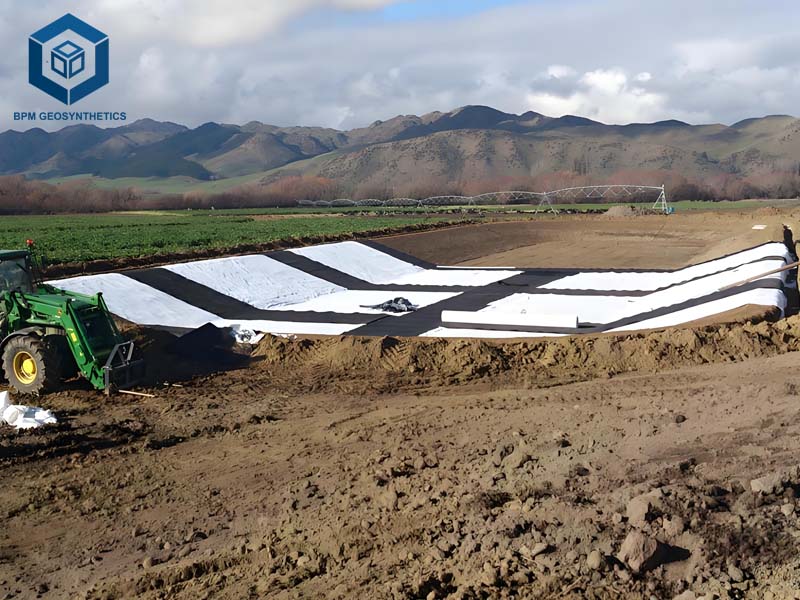
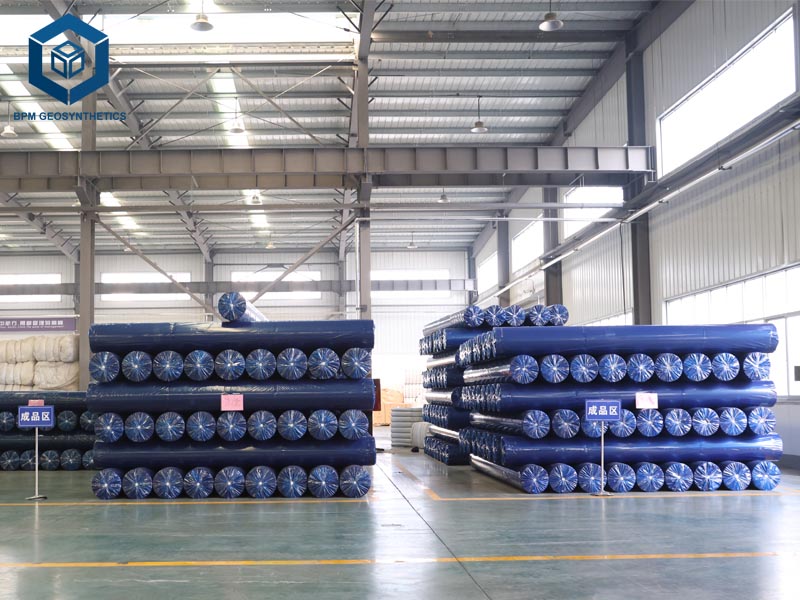
2. What are the Types and Functions of Geo Fabric for Roads?
2.1 There are two main types of Geo Fabric for roads:
- Woven Geo Fabric is made by weaving synthetic fibers such as polypropylene or polyester together to form a sturdy and durable fabric. These Geo Fabricare commonly used for separation and filtration purposes in road construction.
- Non woven Geo Fabric are produced by needle punching synthetic fibers into Geo Fabric s. These Geo Fabric are commonly used for reinforcement and drainage in road construction.
2.2 The role of Geo Fabric for roads includes:
2.2.1 Separation:
Geo Fabric is used to separate different material layers in road structures. This can prevent material mixing and ensure that each layer can perform its expected function. For example, Geo Fabric can be used to separate roadbeds from base layers or base layers from sub base layers.
2.2.2 Reinforcement:
Geo Fabric can reinforce weak or unstable soil, providing additional strength and stability to road structures. This is particularly useful in soft or expansive soil areas, where Geo Fabric help distribute loads more evenly and reduce the risk of settlement or cracking.
2.2.3 Filtration:
Geo Fabric acts as a filter to prevent fine particles from migrating through coarser materials such as gravel or crushed stone. This helps maintain the integrity of the road structure by preventing the loss of fine particles and ensuring proper drainage.
2.2.4 Drainage:
Geo Fabric can also promote drainage by allowing water to flow through them, while preventing the migration of fine particles. This is particularly important in areas with high groundwater levels or frequent rainfall, where proper drainage is crucial to prevent waterlogging and related damage to road structures.
2.2.5 Buffer:
In many applications, Geo Fabric effectively acts as a cushion between material layers. Additionally, it plays a crucial role in absorbing impacts during dynamic loading. Moreover, the material significantly reduces stress concentration in the lower layers. Consequently, this functionality enhances the overall durability and performance of the layered system.
2.2.6 Protection:
First, Geo Fabric effectively shields the underlying soil from external forces. During construction activities, it specifically prevents mechanical damage caused by heavy equipment. Furthermore, the material also safeguards the soil from degradation due to pedestrian traffic. Ultimately, this protection maintains soil integrity and ensures long-term stability.
2.2.7 Compaction:
Geo Fabric actively assists in compacting loose soil layers during installation. By distributing pressure evenly, it effectively increases soil density across the working area. As a result, the reinforced soil gains significantly higher bearing capacity. This compaction process ultimately creates a more stable foundation for construction projects.
2.2.8 Relief of Reflection Cracks:
Geo Fabric effectively minimizes reflective cracking in asphalt overlays by acting as a stress-relieving interlayer. The material specifically absorbs and redistributes tension caused by movement between existing and new pavement layers. Additionally, it creates a flexible barrier that prevents cracks from propagating upward. Consequently, this significantly extends the service life of road resurfacing projects while maintaining smoother driving surfaces.
2.2.9 Erosion Control:
Geo Fabric actively prevents soil displacement on vulnerable slopes and embankments adjacent to roadways. By stabilizing loose soil particles, it effectively combats both wind and water erosion forces. The material simultaneously preserves the structural integrity of nearby road foundations. Furthermore, this erosion control solution maintains the natural aesthetics of surrounding landscapes while preventing environmental damage.
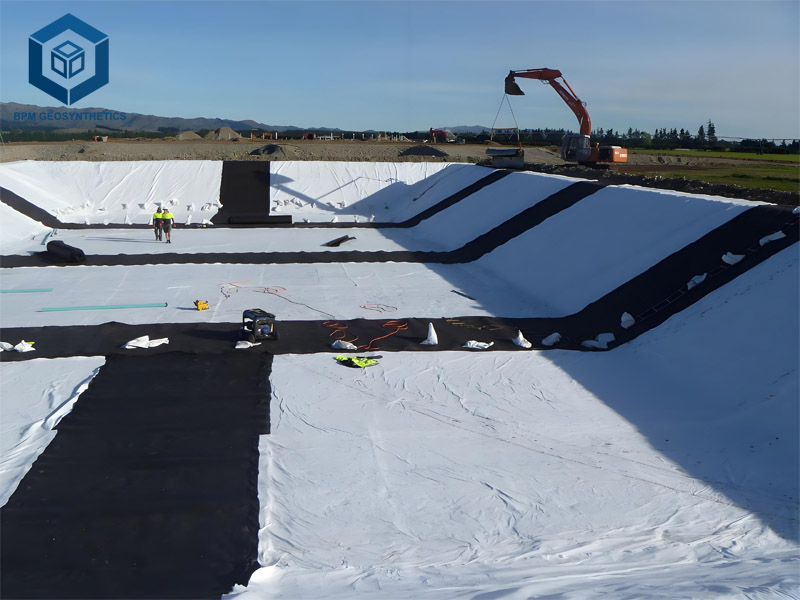
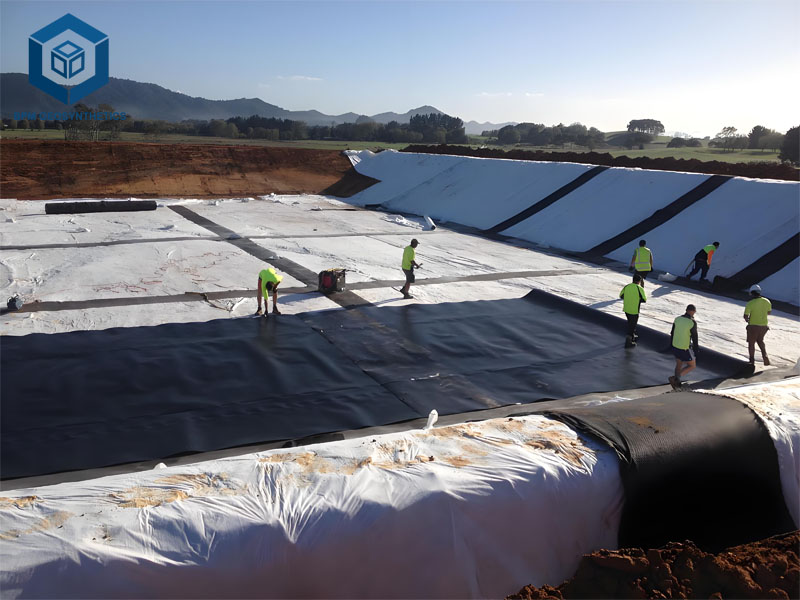
3. Installation method of Geo Fabric For Roads
3.1 Preparation before installation
3.1.1 Grassroots treatment
- Clean up the construction site, ensure that the foundation is flat and dry, remove debris and sharp objects, and check the compaction degree, moisture content, and other indicators of the foundation support layer.
- Before laying on the slope, the top and bottom should be fixed and anti slip nails should be installed to prevent sliding.
3.1.2 Material preparation
- Geo Fabric rolls should be stacked in a flat and water free area, with a height not exceeding four rolls, and covered with opaque material to prevent UV aging.
- Check whether the Geo Fabric is damaged, and if found, repair or replace it in a timely manner.
3.2 Laying method
3.2.1 Manual rolling paving
- Keep the Geo Fabric flat when unfolding, avoid stretching or twisting, and reserve deformation allowance.
- Slope paving should be carried out from bottom to top, with heavy objects fixed as the paving progresses.
3.2.2 Mechanical assisted laying
- Using a roller mechanism (such as a patented device) to improve efficiency, the central rolling shaft is mounted on vertical supports at both ends to ensure stability and roller strength.
3.2.3 Multi layer composite laying (such as two fabrics and one film)
- Lay the first layer of Geo Fabric , geomembrane, and second layer of Geo Fabric in sequence, aligning and fixing each layer to avoid displacement.
3.3 Joint treatment
3.3.1 Suture
- Overlap width ≥ 150mm, using continuous thread locking chain seam method, the seam should be corrosion-resistant and UV resistant.
- The slope joint should intersect with the slope line and avoid being parallel to the force line.
3.3.2 Welding
- Use a hot welding machine or high-temperature hot air welding, adjust the temperature and speed, and test the sealing by inflating after welding.
3.3.3 Adhesive bonding
- Apply specialized adhesive evenly to overlapping areas (≥ 20cm), scrape flat to remove air bubbles, and avoid contact with moisture before curing.
3.4 Fixing and Backfilling
3.4.1 Fixed measures
- Fix the edges of the Geo Fabric with buckles, U-nails, or ground nails to prevent wind blowing or displacement.
- Expansion bolts or steel plate pressure strips are used to anchor the connection with the structure, combined with emulsified asphalt to prevent leakage.
3.4.2 Backfilling protective layer
- Timely cover with 10cm fine sand or clay as a transition layer, and then lay 20-30cm block stones to prevent erosion.
- The height of the backfill soil stones should be ≤ 300mm, and the compaction degree should meet the design requirements.
3.5 Precautions
- Avoid construction in rainy or humid environments, and install a canopy to keep the bonding surface dry.
- Laying personnel should wear soft soled shoes to prevent damage to the Geo Fabric .
- During construction, it is necessary to prevent debris from entering the Geo Fabric layer, and the joints must be strictly inspected for leaks.
4. Summarize
Geo Fabric is a commonly used synthetic fabric material in roads, used to provide basic functions such as separation, reinforcement, filtration, and drainage. It helps prevent mixing of different layers, reinforce weak soil, allow fine particles to be filtered out while allowing water to flow through, and maintain the integrity of road structures by providing buffering, protection, and erosion control. The correct installation and maintenance of Geo Fabric s are crucial for ensuring their long-term performance and durability in road construction projects.

